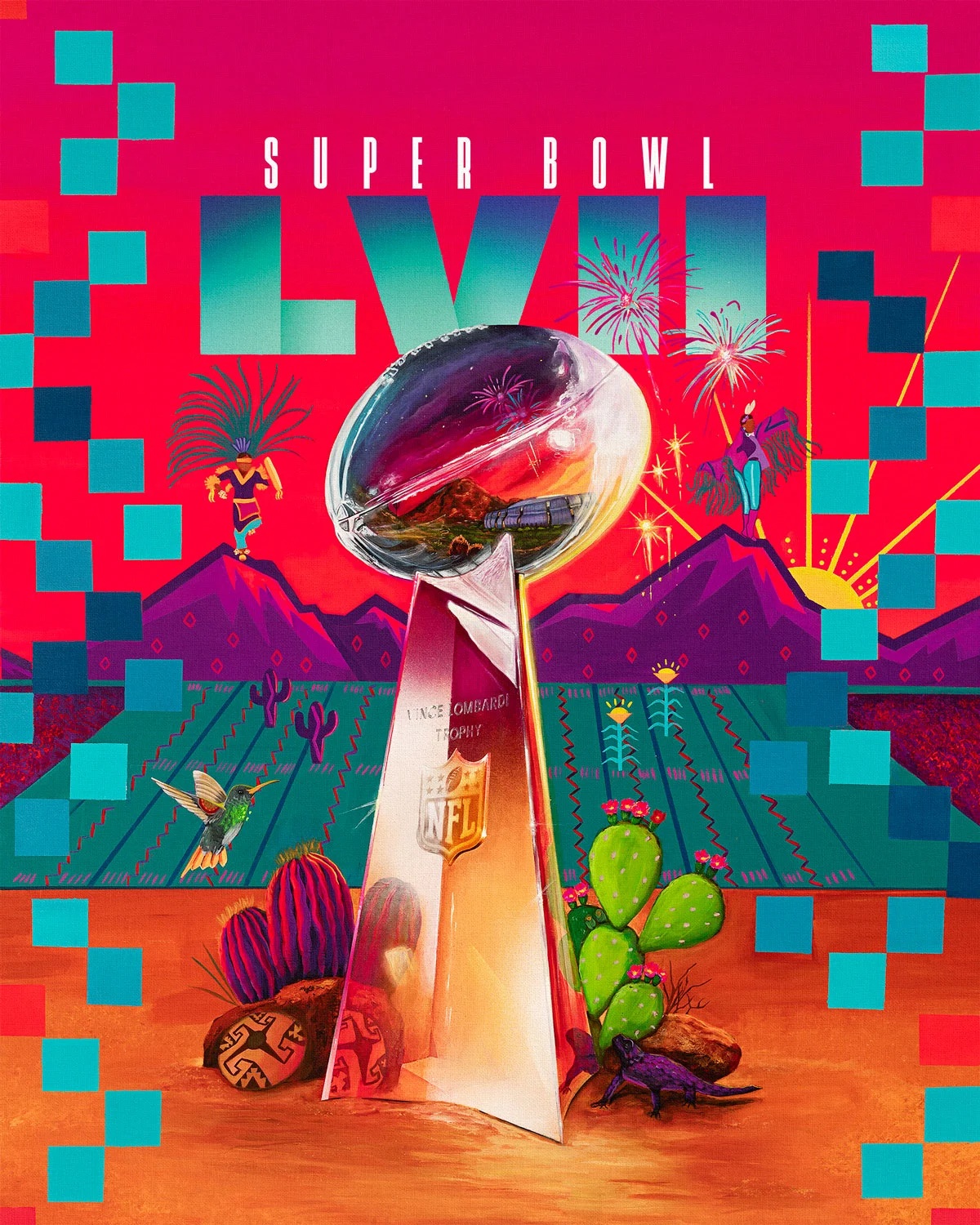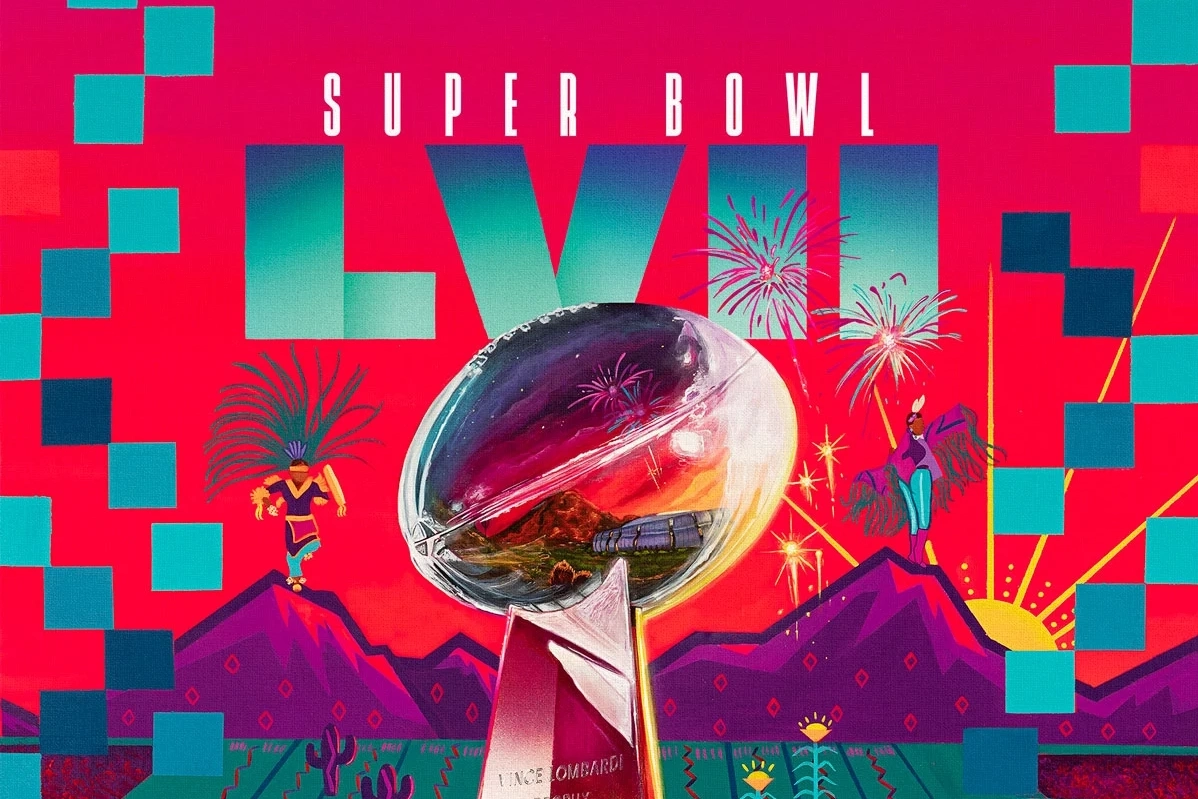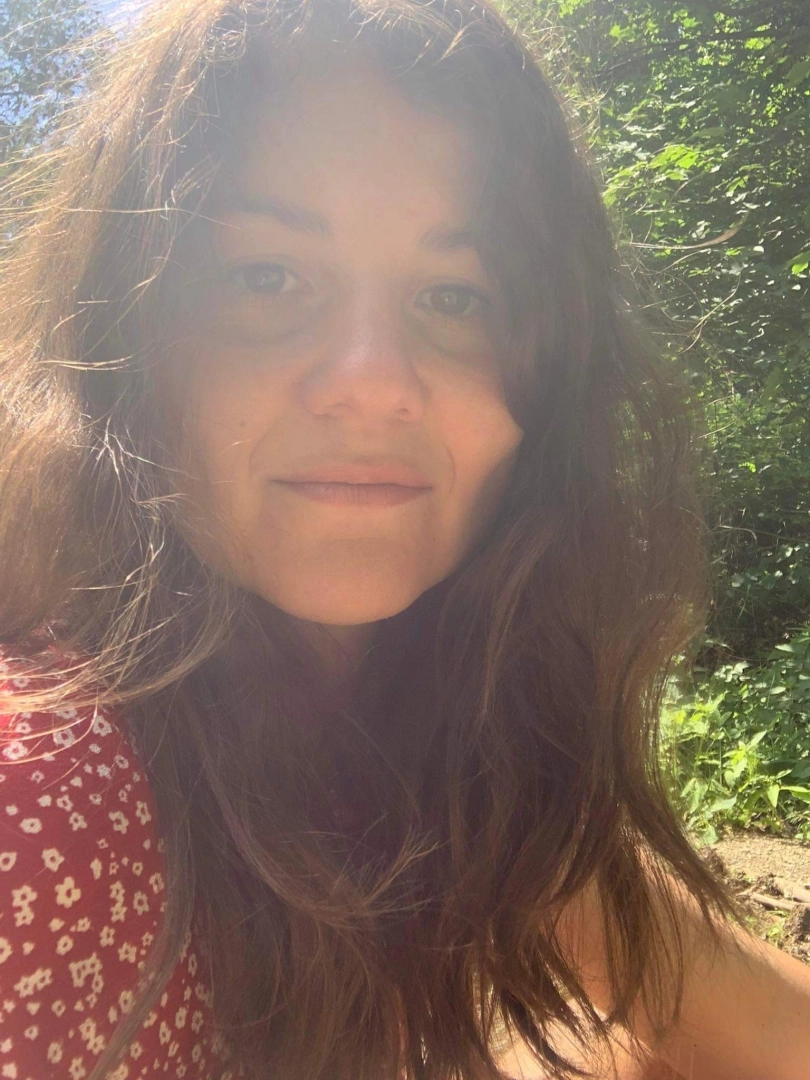Americans continue the long-time trend and try to reconcile with their problematic past also during the closely watched 75th Super Bowl. During the climax of the American football season, the National Football league paid tribute to Native Americans. That’s why they reached out to artist Lucinda Hinojos who designed the event’s main visual theme.
Neither Americans nor Mexicans
All tickets for the main match, which took place on Sunday 12. February 2023 at the State Farm Stadium near Phoenix, bore the work of Chicana artist Lucinda Hinojos. Alongside the ticket design, the artist also created a wall painting almost 3000 m2 in size to promote this year’s Super Bowl, which is also the largest mural in the competition's history. On top of that, she also collaborated with the NFL on a new football design. mural art. Hinojos is the first Chicano artist to ever work with the National Football League.
But who are the American Chicanos? The term was probably coined from as a colloquial abbreviation of the word "Mexicano" and was used pejoratively to refer to the stereotypical idea of lazy Mexican immigrants. However, thanks to the Chicano movement, which emerged in the 1960s, the term gained a new meaning. It became more of a political term; nowadays, being a Chicano means to feel "neither like an American, nor like a Mexican". In the 1960s, Mexican American students marched through American cities and demanded Chicano Studies being included in university programs.
Adopting the Chicano identity is a way for Mexicans to express ethnic solidarity. For example, boxer Rodolfo Gonzales was among the first to join an akin movement which emerged alongside the "Black is Beautiful" – the Brown Pride. The Chicano identity then symbolized the pride of having a different skin color than white. The philosophy behind the Chicano identity challenged the label "white with a Spanish surname", which was used in the 1950 US Census. Chicanos then promoted ethnic pride at a time when the US government was pushing through the assimilation of Mexicans into white society, which was to "serve the interests of Anglo-Americans" who claimed Mexicans were white in an attempt to deny racism towards them.
La Morena
Lucinda Hinojos also goes by a pseudonym, La Morena.
"My family's roots run deep in Arizona," says she in a promotional video for this year's Super Bowl. "My family was born and raised in this country. We’re currently on Ohn Akimel O’odham Jeved land, which is for the Salt River people. This country is important to me. This land is important to me because of our ancestors’ use of this salt river. Here is what created and started the city of Phoenix."
As she's walking through the desert land of Arizona in the promotional video, she adds: "Being out here gave me inspiration for this painting." The main motif of her mural are hence the White Tank mountains which you can see also from the State Farm Stadium. The mountains from the painting mirror in the trophy awarded to the Super Bowl's victors.

"I do this work in hopes of providing healing and medicine to ancient wounds by connecting people," says Hinojos. "Every mural draws attention. So I’m hoping that the same response is brought by my painting, too."
"Not many people know that here in Arizona we have 22 tribes. Many people here do not even know what the original name of the territory on which we are located today was, so with everything that I'm doing with this painting, it ties into those elements, to their sore past," explains Hinojos, who was born and raised in Pheonix. "This painting represents celebrating the Super Bowl, but at the same time, it's also honoring both of my cultures, the Chicano culture and my Indigenous culture," she adds.
This is not Lucinda Hinojosa's first activist mural. The artist's murals have been long drawing attention to many other issues associated with her community. Phoenix hides her mural art depicting a young immigrant woman working in a field holding a cage from which she's releasing white doves, or a face profile of a young girl with a bloody palm print over her mouth. Like other works by Lucinda Hinojos, also the latter of the murals is accompanied by a short text: "No more stolen sisters." Hinojos obviously joined her fellow artists who are trying to raise awareness about the alarming number of kidnapped or murdered Native American women in the area.
.jpg)
.jpg)
Lucinda Hinojos (also known as La Morena) was born in 1981. She is an American of Mexican descent, a Native American with Pascua Yaqui, Chiricahua Apache, Pima, and White Mountain Apache tribal roots. She is best known as a painter, activist, art curator and mentor. She is best known for her colorful murals, but she also creates individual and collective art in public space and exhibites in galleries throughout the United States.

%20Mural%20art%20Super%20Bowl.jpg)
